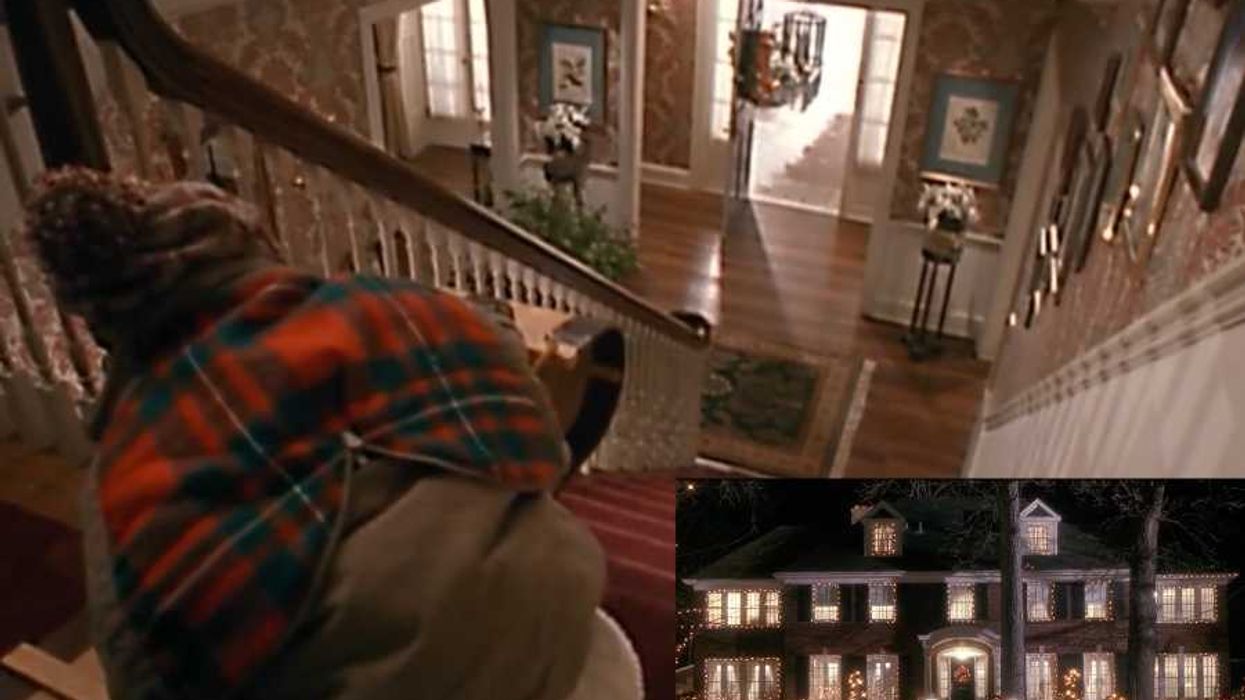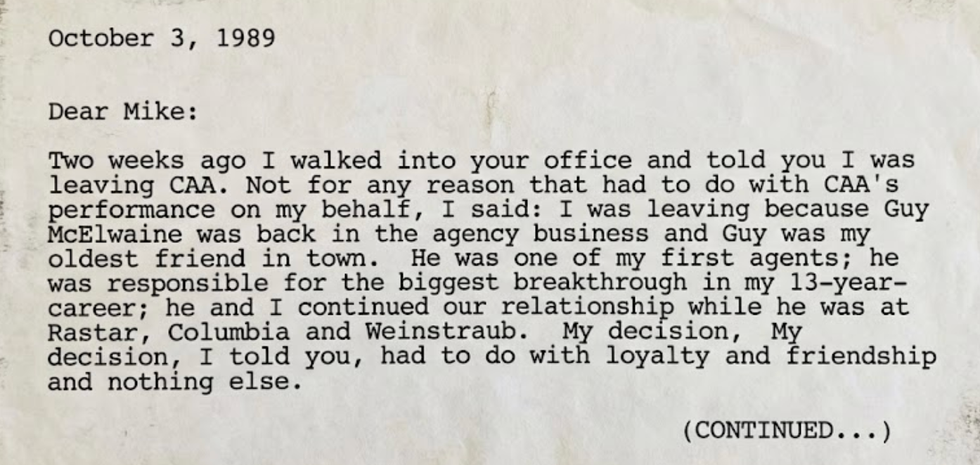During one particular late-night editorial meeting, when all of us here at GOOD HQ probably had a few too many, we came up with the idea to send briefs detailing global problems to some of our most creative friends with one simple instruction: to design a solution to the problem in less than 30 minutes, a time frame that would make them think about the problem, but limit the extent to which it might overwhelm them. Call it "The Half-Baked Design Challenge." Some of the solutions are comical. Some are super thoughtful. Some, to be perfectly frank, are mildly disturbing. But all of them engage creatively with a problem in search of a solution, and we think that's a good thing. In this installment, we redesign the automobile.
Early automobile designers promised us freedom on the open road, but what we ended up with was multi-ton vehicles that kill more than a million people each year, lead to obesity, cause clinical road rage, and consume hundreds of hours of our lives as we sit in traffic or search for parking.
Then there are the problems caused by fuel. Automobiles, run on fossil fuels, are a leading cause of carbon emissions and climate change. Car exhaust is carcinogenic. Dense areas of vehicular traffic create clusters of asthma, especially among children. And while the emerging electric cars might contribute less to pollution and its health effects, they don’t eliminate a car’s carbon footprint. Current electric car batteries require significant energy to manufacture, and if you’re plugging your car into coal-powered electricity, you’re still contributing carbon emissions.
The economic harm cars render on individuals is significant too. The average American spends about two months a year paying for their car, while only driving it an hour or two a day. More than 90 percent of the time, it sits idle. For this, owners must build a garage or purchase a parking place—for an object so big it can usually fit four people, but too often transports only one.
Because its design requires heightened attention, a car cannot be operated safely after ingesting alcohol. Or while sleepy. Or while talking on a cell phone, texting, or tweeting.
After 100 years, the “horseless carriage” is due for a redesign. Will what comes next be an improved vehicle, or something else? For the first time in generations, young people are driving less than their parents did, and biking, walking, and taking public transit more.
And will cities need to change along with cars? The ubiquity of cars has shaped cities, as we’ve built wider streets and extended freeways that make it harder to walk and bike and know our neighbors. Much of urban design seems stuck in the vision presented at the 1930s “Futurama” exhibit sponsored by GM. The installation at the 1939 New York World’s Fair promised a utopia centered around cars and free-flowing traffic, but ended up inspiring much of the congestion it was trying to eliminate.
If the car has a sustainable future—free from fossil fuel, traffic, burdensome payments, exhaust, and over a million direct and countless indirect deaths each year—it has to be completely rethought.
Robin Chase: Founder, Zipcar
A car is just one part of a mobility network. The future is multimodal. Walking and biking are safe. We have metros and bus rapid transit for inner city connections. We have light and heavy rail for longer distances. We have ridesharing for fast and cheap travel to places not well served by mass public transit/rail. We have car sharing for trips that are outside of our regular routines: long distance, or accommodating many people (a family), or trips that include old/ sick/broken leg/disabled/transport of heavy items, require specialty vehicles.
With my smartphone, I have fast knowledge of my transport options, and can choose the best mode for each individual trip, access this mode/vehicle, and pay for it quickly—all without significant effort. All vehicles and modes are part of the Internet of Things: meaning they connect one to the other, M2M, as well as within my social networks. My vehicle, regardless of mode, is as connected to my life as my smartphone is. With all of the above as a given, people really love autonomy. This is why we like to walk and bike. The new car will give us that kind of autonomy WHEN IT IS THE RIGHT CHOICE (fastest, cheapest, easiest) FOR A PARTICULAR TRIP. I think of these as “Personal Mobility Devices.” Like car sharing, they could be owned personally (‘I live in a suburb or rural area, and need such a PMD to get to work’), or shared (‘I live in a dense urban environment and I want to go by car/PMD only rarely and don’t want to store or own, but simply pay per use’).
An inflatable human-electric velomobile [bicycle car or human-powered vehicle] would weigh less than the 60 lbs. It would have 3 wheels for safety and power-assisted steering, which would mean that people who are too old, sick, or broken could still drive it using power only. But the rest of us would definitely pedal most of the time, because it would be so easy, and thus could save power for if we hit a big hill and really needed it.
Light and safe, you would bounce off obstacles.
Ignition would be enabled/gears unlocked by a signal from a smartphone, demonstrating authorized access (by the owner or whomever is renting/sharing it).
Most of the time you would keep it inflated, but in tight parking or storage situations, you could simply deflate it and reduce it to a very small size.
You could also unfold and inflate an extension to add another seat or cargo space. When done, you would simply deflate and fold up.
Most lanes in the city, and many rural roads and specific lanes on highways, would be designated “lightweight, low speed.” I wouldn’t have to worry about getting killed by someone who has an SUV. I wouldn’t have to wear a helmet. If I was over the age of 12, I’d have already been instructed in school about the rules of the road. It would be very simple to drive.
It would be rechargeable with an extension cord and compatible with a STANDARD wall socket.
Also, the velomobile could get charged while slowing to go down big hills, or braking. It would have LED lights for nighttime.
Deflated, it probably would have two mechanical folds of the hard structure (wheels, seat, steering mechanism, electric power assist) to make it about two-feet square and three-feet high. I’m thinking of those umbrella strollers that fold up. Likely, it would have a standard mechanical air pump so that you could inflate it anywhere. Of course, there would be air compressors on street corners for all of our convenience.
How I would love to have one of these!
COST: $1,000-$2,000
WEIGHT: 20 pounds
FUEL EFFICIENCY: Hybrid human/electric powered
Colleen Corcoran: Transportation Advocate
My solution for the automobile would involve giving drivers more options. Rather than a person having one single automobile that belongs to him or her, automobiles would be shared, open source, and would exist in more variety—people could select different transportation options depending on their day to day needs.
For instance, someone who needs to go a fairly short distance to work would have options such as picking up a bike at a bike share station by his/her home or hailing a pedicab, if he/she needed to send some emails along the way. Of course, there would be public transit as well—local buses for short distances and light rail or bus rapid transit for longer trips—but these would also exist in more variety. There would be the local government-run transit, but also smaller, privately run jitneys, with more flexibility as to when and where people could be dropped off.
For last minute trips, there would be open source, user-run taxi services, like Lyft, but these would run more efficiently than they do now, with in-car displays that let drivers know when they can pick someone up who is going the same route for an impromptu carpool. These rides would be very inexpensive, or free, for the riders, but drivers would be incentivized to do this through tax breaks and fuel credits.
Each neighborhood would also have a centralized car share program with a variety of vehicles—bikes, segways, scooters, and personal electric vehicles for short local trips, and larger trucks for times when someone might need to haul a load of compost home for their garden. There would also be a separate public transit service for kids, consisting of a similar variety of vehicles, but specializing in picking up kids who both live near each other and participate in activities in the same area, taking them where they need to go so that parents are not shuttling individual kids around independently of one another.
The arrival times, availability, routes, and fares of all of these different types of vehicle share programs and public transit services would be aggregated into one smartphone app that would help people figure out the most efficient way to get from point A to B at a given time—similar to Google Maps but with even more modes than the car/ bus/bike/pedestrian directions that exist currently. Methods of fare payment would be integrated so that no physical currency would need to be exchanged en route but would be handled electronically.
Casey Neistat: Filmmaker
My car has four doors, five seats, six cylinders, seven speeds, and 12.4 cubic feet of storage space. But nine out of 10 times, the car is only transporting me: a single human being.
My half-baked solution to the ridiculousness that are cars is to create a small, safe, pod vehicle that is electrically powered and has a carbon footprint no bigger than a motorcycle.
There are roughly 30,000,000 scooters in Vietnam. They’re everywhere. The scooter is not perfect. People often die from scooter-related incidents. They’re loud, dependent on fossil fuels, and, most importantly, it’s nearly impos- sible to talk on your cell phone while riding on one. But a scooter is not without its virtues and those virtues are considerable when compared to the big, ridiculous, gas guzzling cars we use to transport ourselves from point A to B.
First, the scooter uses the minimum power source (engine size) to transport a human. Sure, you could pile a couple of pigs on the back but at 50cc’s it’s optimized to move its main cargo—a human being. My car, by comparison, has a 201 horsepower engine capable of carrying five people while towing a small boat. The power source of my pod vehicle should be directly correlated to its main cargo—one person.
Second, my car is 16 feet long and nearly 6 feet wide. I am 6 feet tall and 18 inches wide. Like a scooter, the solution to cars should be small—not much bigger than a human. Think of how many scooters could fit on a single lane of 5th Avenue in New York versus the amount of taxi cabs.
Third, this is where I get all George Jetson: The pod needs to be enclosed. One of the less romantic aspects of scooters in Vietnam is how all of the locals cover their faces to keep out exhaust and other shit in the air. An enclosed pod means no shit, no noise. The second most important feature of a car, after the engine and before the brakes, is the stereo. A scooter is too loud for a stereo, thus a quiet electric-powered pod would have great acoustics.
Then there’s safety. One reason cars keep getting bigger is that no one in a tiny car wants to drive on roads with huge tractor trailer trucks. It’s scary. Because so many pods can fit on a road, there should be two roads: pod roads and non-pod roads. Traffic problem solved. If there is a pod collision, the damage would be minimal.
So that’s my half-baked solution. Some other things that I couldn’t really figure into this thesis: I want to sleep in my pod while it drives me. I need a way to attach my bike to my pod. My pod should also have a place for my skateboard. And, ideally, the pod should be able to fly.
For more fully-baked ideas, check out our companion piece about the future of the automobile.
Illustrations by Kate Bingaman-Burt

















 A hotel clerk greets a guestCanva
A hotel clerk greets a guestCanva Gif of Faye Dunaway' as Joan Crawford demanding respect via
Gif of Faye Dunaway' as Joan Crawford demanding respect via  An empty rooftopCanva
An empty rooftopCanva
 A road near equatorial Atlantic OceanCanva
A road near equatorial Atlantic OceanCanva Waves crash against rocksCanva
Waves crash against rocksCanva

 Two people study a mapCanva
Two people study a mapCanva Foggy Chinese villageCanva
Foggy Chinese villageCanva

 An excerpt of the faxCanva
An excerpt of the faxCanva